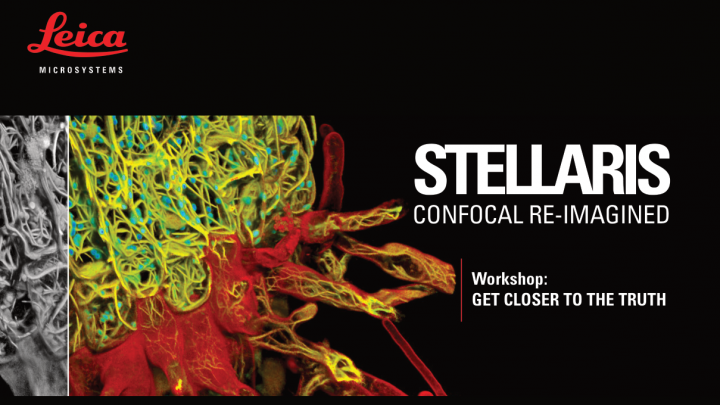The Power and Potential of the Leica STELLARIS 8 imaging platform
Jun 20, 2022
2:00PM to 3:00PM
1280 Main Street West, Hamilton, Canada

Date/Time
Date(s) - 20/06/2022
2:00 pm - 3:00 pm
Location
ABB - room 102

Fluorescence microscopy has evolved over the years as an essential component of applied and life science research. Leica Microsystems has played an integral role in developing and providing innovative imaging solutions to the research community, with the STELLARIS representing the latest confocal platform from Leica. The STELLARIS is a true multiplexing imaging system that was specifically designed for speed, sensitivity and versatility based on the pillars of Power and Potential.
The Power to see more is related to the unmatched sensitivity of the STELLARIS due to a straightforward and efficient light path, unique detector technology with higher PDE than PMT-based detectors and complete spectral freedom for both excitation and emission. The STELLARIS offers a White Light Laser with 350 laser lines ranging from 440nm-790nm and entirely filter-free and tunable detection going up to 850nm. The LIGHTNING mode of the STELLARIS provides resolution down to 120nm laterally and <300nm axially. The high-speed scanner and all of these unique and innovative features of the STELLARIS offer an ideal platform for gentle live cell imaging.
The Potential to discover more is based on the true multiplexing capabilities of the STELLARIS with tunable excitation and detection and direct access to the fluorescence lifetime information. Fluorescence lifetime is an additional dimension that is an inherent property of all fluorescence and can provide invaluable insight that is not possible with intensity-based imaging. Fluorescence lifetime is not necessarily a new concept. Still, its implementation in life science research has been somewhat limited due to the complex nature of the hardware and slow acquisition speeds that can’t keep up with the pace of biological processes. However, this has all changed with the introduction of the lifetime-based tools with the STELLARIS. More specifically, the tauSense toolset utilizes the average photon arrival time on-the-fly during acquisition, providing an additional contrast method for multiplexing. The FALCON module enables fast time-correlated single-photon counting (TCSPC) based FLIM. Both approaches are fully integrated with the STELLARIS for ease of use and are multiple photons per laser pulse for unmatched acquisition speeds for lifetime-based applications.

